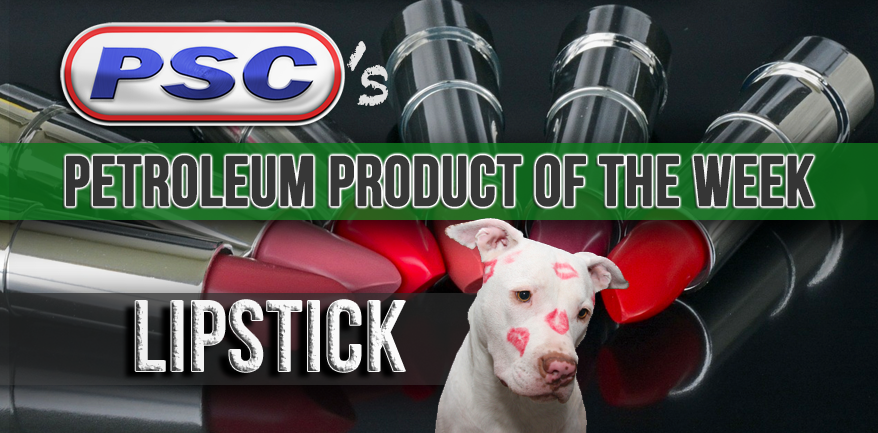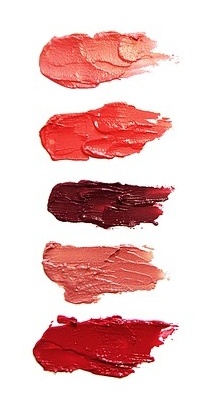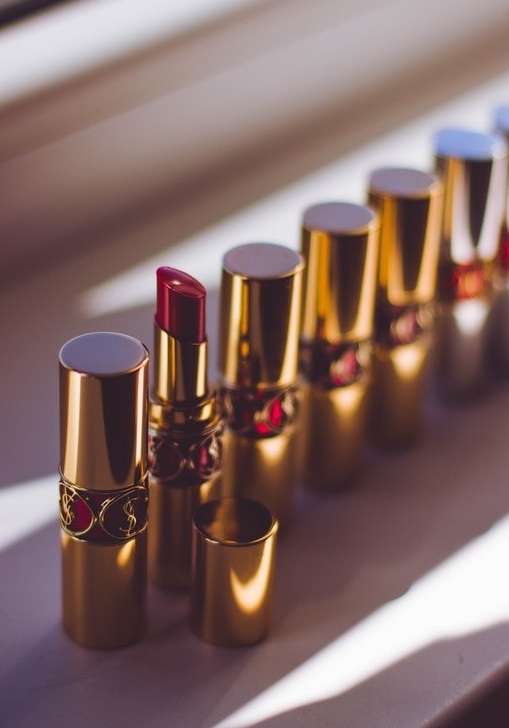Petroleum Product of the Week: Lipstick
By on Nov 17 2017

"Pour yourself a drink, put on some lipstick, and pull yourself together."
--Elizabeth Taylor
There's just something about finding the perfect shade of lipstick that is oh so satisfying. Maybe it's a shade close to your natural lip color that adds just a touch of moisture. Maybe it's a rich shade of red (with blue undertones) that complements your fair complexion. Or maybe it's deep plum or shimmery black that matches your favorite pair of moto boots to a T. Sometimes you feel naked in an outfit until you dress your lips, too.
There's just something about lipstick, man.
Lipstick is not a modern invention. While liquid lipsticks, lip stains, and gloss sticks feel so new (I mean, look at all the new types coming out all the time!), people have been putting color to lip for a very long time. Sure they didn't have mattes, metallics, glossy, pearlized, or glittery finishes, but they made do. We have simply adapted the concept over the past few thousands of years to make our own statements--with our own ingredients.

The History of Lipstick
It's believed that ancient Sumerians were the first to invent and wear lipstick around 5,000 years ago. These Mesopotamian women and men actually used crushed gemstones to decorate their lips with rich, glimmery dusts. Ancient people also used naturally-occurring colorful substances like fruit, henna, clay, and insects to decorate their lips.

While people from the Indus Valley Civilization regularly used lipstick, it was in Egypt where lipstick making (and wearing) advanced. Members of the royal, clerical, and high classes wore several different types of lipstick as a representation of social status. For color, they extracted the red dye from fucus-algin, 0.01% iodine, and bromine mannite. However, this dye was poisonous and caused serious illness. Egyptians like Cleopatra also began to create carmine red color lipstick from crushed cochineal insects, a source that is still used today. Fish scales provided pearlescent substances for shimmery lipsticks.
During the Islamic Golden Age, cosmetologist Abu al-Qasim al-Zahrawi invented the first solid lipsticks sometime between 8 and 12 AD. In Europe, the Catholic Church banned lip coloring until the late 16th century. With the reign of English Queen Elizabeth I in the 16th century, bright lips became fashionable. These lipsticks were made from beeswax and red stained plants and only high-class women and actors wore them.
During the centuries that followed, lipstick slipped in and out of fashion between the classes. By the 18th century, lipstick made its way to the middle and lower classes. However, for nearly the entire 19th century, only select invidivuals wore it, including actors. This changed yet again in 1884 when the French cosmetic company Guerlain made the first commercial lipstick from deer tallow, castor oil, beeswax.
By 1912, American women accepted lipstick and it became a staple of both their daily and public image and attire. The rise of photography and film helped make lipstick accessible across the entirety of Europe and North America. In England, lipstick became widely used by women by 1921.
How It's Made
Lipstick has undergone significant changes since the 20th century, let alone since Mesopotamia. Colors, styles, finishes, and ingredients are just some of the many changes lipstick has undergone.
Early lipsticks did not come in a screw-up tube and were applied with a brush. In the early 1890s, carmine dyes were mixed with an oil and wax base and were sold in paper tubes, tinted papers, or in small pots. Metal tube containers were invented by Maurice Levy by 1915. During WWII, however, manufacturers replaced these metal tubes with plastic and paper tubes.
The war also impacted the availability of lipsticks. Petroleum and castor oil were both essential ingredients and unavailable at this time.
Ingredients
Wax, oils, alcohol, antioxidants, and emollients are all typical ingredients of lipstick. The wax provides structure to the solid products. Liquid lipsticks and stains don't contain the wax for structure. Every product and brand varies, but commonly used waxes include beeswax, ozokerite and candelilla wax. Manufacturers use a number of oils and fats are in lipsticks. These can include olive oil, mineral oil, cocoa butter, lanolin, and petrolatum ( petroleum jelly). Mineral oil and petrolatum are both by-products of refining crude oil to make gasoline and other petroleum products.
Typically, about 60% of the lipstick (by weight) is wax and oil and alcohol and pigment account for 25%. Fragrance accounts for a very small percentage and other ingredients, such as preservatives, make up the rest.
Manufacturing
There are 3 separate steps to making a tube of lipstick: melting and mixing, pouring into the tube, and packaging the product.

First, all raw ingredients are melted and mixed separately. Solvents, oils, and fats/waxy materials are heated in separate containers. Once melted and mixed, the solvent solution and liquefied oils are mixed together with color pigments. The mixture is passed through a roller mill to ensure the pigments are ground. The mixture is then stirred for several hours and the air is removed. Once grounded and thoroughly mixed, the pigment mixture is added to the hot wax until it is uniform in color and consistency. To use the lipstick mixture immediately, it is kept at temperature with agitation so any trapped air can escape.
Once the lipstick mixture is fully mixed and free of air, it can be poured into the tube. The mold consists of the bottom portion of the tube (either metal or plastic) and a shaping portion. The lipstick is poured so the bottom of the tube is at the top of the mold. Excess product is scraped off the mold, the lipstick is cooled and separated from the mold, and the bottom of the tube is sealed. The lipstick is then "flamed' to seal pinholes and improve its overall finish. The lipstick can be reworked by hand (to a limited extent) if there are blemishes.
The blemish-free lipstick is retracted into the tube and capped and can now be labeled and packaged for shipment. Packaging for lipstick varies significantly, depending on the end use of the product itself.
Besides the petroleum that may or may not be found in the lipstick itself, there is no doubt that a variety of industrial lubricants and greases are involved in this highly automated process.
Sources:
http://www.lipstickhistory.com/
http://www.stylecraze.com/articles/a-complete-history-of-lipstick/
http://www.madehow.com/Volume-1/Lipstick.html
https://en.wikipedia.org/wiki/Lipstick






